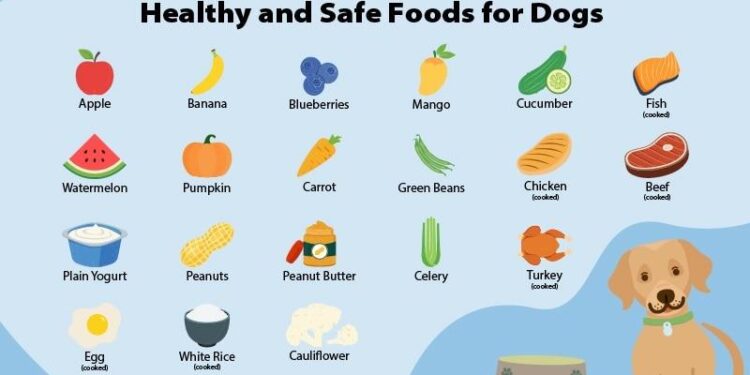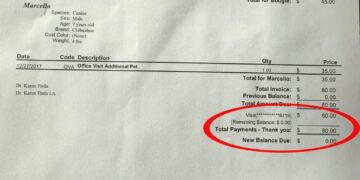Table of Contents
I remember the exact moment the frustration boiled over.
It was 2 AM, and the only sound in the house was the relentless thump-thump-thump of my dog, Barley, kicking his leg as he scratched an itch that never seemed to end.
For months, we’d been trapped in a cycle of vet visits, expensive medications, and dietary dead ends.
I was doing everything “right”—or so I thought.
I was a practitioner in animal health, and I was feeding Barley a boutique, grain-free kibble that cost more per pound than my own groceries.
The bag was covered in pictures of wild wolves and pristine landscapes.
The marketing promised an ancestral diet, free of “fillers” and “by-products.” Yet, my dog was miserable, with flaky skin, chronic ear infections, and digestive upset that made walks a stressful gamble.
That 2 AM scratching was my breaking point.
I had spent years in my professional life learning to analyze complex systems, to look past surface-level claims and dig for foundational truths.
But when it came to my own dog, I had fallen for the story on the bag.
I was acting like a consumer, not a scientist.
The epiphany hit me with the force of a revelation: I had to stop reading the marketing and start conducting a forensic investigation.
I needed to shift my focus from the alluring list of ingredients on the label to the integrity, expertise, and scientific rigor of the manufacturer behind it.
This guide is the culmination of that journey.
It’s the framework that transformed my approach, healed Barley, and has since helped countless clients navigate the bewildering world of pet food.
We will move past the emotional marketing that creates so much anxiety for loving owners 1 and replace it with a clear, science-backed methodology.
We’ll start by building a foundation in real canine nutrition, then learn to decode labels and marketing claims, and finally, apply an expert evaluation framework to identify the most trustworthy dry dog foods made right here in the USA.
This is the guide I wish I’d had on that long, sleepless night.
Part I: Foundations of Canine Nutrition – Beyond the Marketing Hype
Before we can evaluate a single bag of food, we must first clear away the fog of misinformation and establish what our dogs actually need to thrive.
The modern pet food market has become a battleground between compelling, emotionally resonant marketing narratives 4 and the often less glamorous, objective science of canine nutrition.6
To make an informed choice, we must start with the science.
What Your Dog Truly Needs: A Nutrient-First Approach
The single most important shift a dog owner can make is to stop thinking about ingredients and start thinking about nutrients.
As veterinary nutritionists at Tufts University’s acclaimed Petfoodology resource state, “pets require nutrients, not ingredients”.6
A beautiful list of whole foods on a label can be less nutritious than a list of less appealing (to humans) ingredients if the final product isn’t properly balanced.
A dog’s body doesn’t care if the protein comes from a whole chicken or chicken meal; it cares that it receives the correct profile of essential amino acids.
According to the Association of American Feed Control Officials (AAFCO), there are six essential nutrient categories required to support a dog’s life and bodily functions 8:
- Protein: The building block for all body tissues, protein provides essential amino acids that dogs cannot produce on their own. The quality and digestibility of the protein source are far more important than whether it’s a “whole” meat or a “meal”.9 AAFCO sets minimum protein requirements, which are higher for growing puppies (22.5% on a dry matter basis) than for adult dogs (18%).8
- Fats: This is the most concentrated source of energy. Fats are also critical for absorbing fat-soluble vitamins and providing essential fatty acids, like omega-6 and omega-3, which are vital for healthy skin, a lustrous coat, and reducing inflammation.
- Carbohydrates: Perhaps the most maligned nutrient group, carbohydrates are a crucial and efficient source of energy. Despite marketing claims, dogs have evolved alongside humans and possess specific genes that allow them to effectively digest starches from sources like corn, rice, and barley.10 In fact, most dry dog foods are composed of 30-60% carbohydrates, which are necessary to form the structure of kibble.8
- Vitamins and Minerals: These micronutrients are essential for a vast range of metabolic functions, from bone growth (calcium and phosphorus) to immune system support (Vitamins E and C).
- Water: The most critical nutrient of all. While often overlooked, constant access to fresh, clean water is paramount, especially for dogs on a dry kibble diet.2
This nutrient-first mindset is a powerful defense against misleading marketing.
Many brands build their entire identity around vilifying certain ingredients (“No Corn, Wheat, or Soy!”) or glorifying others (“With Real Blueberries and Kale!”).
This tactic, known as “ingredient fixation,” preys on our human perceptions of healthy eating.
It leads well-meaning owners to reject a scientifically formulated food containing corn and by-product meal (both valuable nutrient sources) in favor of a boutique diet filled with peas and lentils—the very ingredients that have been linked to a devastating heart condition.
By focusing on whether a food provides the right nutrients in the right balance for a dog’s specific life stage, we can see past the marketing and evaluate the food on its true merits.
Decoding Common Health Concerns: Allergies, Intolerances, and Heart Health
Much of the anxiety around choosing a dog food stems from health concerns, particularly allergies and the more recent issue of diet-associated heart disease.
Understanding the science behind these issues is critical.
Food Allergies vs. Food Intolerances
These terms are often used interchangeably, but they are clinically distinct.
A true food allergy is an immune system response, where the body mistakenly identifies a food protein as a harmful invader.11 An
intolerance, by contrast, is a digestive issue where the body struggles to break down a particular ingredient, like lactose.13
While symptoms can overlap (e.g., itching, vomiting, diarrhea), the underlying mechanism is different.
The only reliable way to diagnose a true food allergy is through a veterinarian-supervised elimination diet trial, which can take 8-12 weeks.12
Contrary to popular marketing, grains are not the primary cause of food allergies in dogs.
Overwhelming evidence shows that the most common allergens are proteins.
Studies have identified the most frequent culprits as beef (34% of cases), dairy (17%), and chicken (15%), with wheat accounting for only 13% of cases.11
The DCM Crisis: A Cautionary Tale of Marketing Gone Wrong
Beginning in 2018, the U.S. Food and Drug Administration (FDA) began investigating a sharp increase in cases of a serious heart condition called Dilated Cardiomyopathy (DCM) in dogs.18 DCM is a disease of the heart muscle that causes it to become thin and weak, leading to poor pumping ability and, eventually, congestive heart failure.20
The FDA’s investigation identified a strong link between these DCM cases and dogs eating certain types of diets, which became known as “BEG” diets:
- Boutique brands from small, often new, companies.
- Exotic ingredients, such as kangaroo or alligator.
- Grain-free formulas. 20
Crucially, the problem does not appear to be the absence of grains itself.
Instead, the leading hypothesis is that the ingredients used to replace grains in these formulas—primarily high concentrations of legumes like peas, lentils, and chickpeas, as well as potatoes—may interfere with the absorption or metabolism of taurine, an amino acid crucial for heart health, or contain other cardiotoxic compounds.10
The brands most frequently named in FDA reports were Acana, Zignature, and Taste of the Wild.18
In many documented cases, the dogs’ heart function improved or returned to normal after they were switched off the BEG diet and onto a grain-inclusive formula from a well-established manufacturer.20
The DCM crisis serves as a powerful, real-world example of the dangers of ingredient fixation.
Marketers successfully created a narrative that demonized grains, leading to a massive consumer demand for grain-free products.
To meet this demand, manufacturers used novel, under-researched ingredients like legumes as primary components.
This perfect storm—fueled by marketing that eroded trust in veterinary science and exploited consumer anxiety—led to tragic and avoidable health consequences for pets.
It underscores why our evaluation must go deeper than the ingredient list on the front of the bag.
A Veterinarian’s Guide to Debunking Pet Food Myths
The pet food aisle is built on myths.
Let’s dismantle the most common ones with scientific facts.
- Myth 1: Grains are just “fillers.”
- Fact: This is a marketing term, not a nutritional one. Grains like corn and rice provide essential nutrients, including highly digestible carbohydrates for energy, fiber for gut health, and protein.10 True grain allergies are rare.13
- Myth 2: Animal by-products are unsafe “junk.”
- Fact: According to AAFCO, by-products are clean, non-muscle parts of an animal, such as the liver, spleen, and kidneys. These organ meats are often more nutrient-dense than the muscle meat humans prefer, providing vital nutrients like Vitamin A and calcium.17 They are not hooves, hair, or floor sweepings. Their use is also a sustainable practice that reduces food waste.
- Myth 3: “Holistic” or “Natural” on the label means the food is superior.
- Fact: “Holistic” has no legal or regulatory definition in pet food; it is a purely marketing term.24 “Natural” has an AAFCO definition, but it doesn’t guarantee a food is safe or nutritionally complete. “Organic” has a strict USDA definition, but studies have found negligible nutritional differences between organic and conventional pet foods.24 These words do not equal quality.
- Myth 4: A compelling “founder’s story” is a sign of a trustworthy brand.
- Fact: The narrative of a founder who created a food in their kitchen to cure their own sick pet is a powerful marketing gimmick.5 However, a single anecdote is the lowest form of scientific evidence. It is no substitute for controlled feeding trials, digestibility studies, and formulations developed by qualified nutritionists.5
Part II: The Regulatory Landscape – Understanding the Rules of the Game
To conduct a proper investigation, you need to understand the law.
For dog food, this means learning to read the language of the label, which is governed by a specific set of rules that can either inform or mislead you, depending on your knowledge.
AAFCO and the Pet Food Label: Your Rosetta Stone
The Association of American Feed Control Officials (AAFCO) is a non-governmental organization that sets the nutritional standards and labeling regulations for pet food in the United States.
While AAFCO itself has no regulatory authority, its model regulations are adopted into law by most states, making them the de facto standard.27
A dog food label is a legal document, and learning to read it is your most important skill.
The Most Important Part of the Bag: The Nutritional Adequacy Statement
Tucked away in small print, usually on the back or side of the bag, is the single most important piece of information on the entire package.29 This statement tells you if the food is “complete and balanced” and for which life stage it is intended.
A company can make this claim in one of two ways:
- “[Product Name] is formulated to meet the nutritional levels established by the AAFCO Dog Food Nutrient Profiles for .” This means the food was created using a recipe or computer analysis to meet the minimum nutrient requirements. This is the minimum standard.
- “Animal feeding tests using AAFCO procedures substantiate that [Product Name] provides complete and balanced nutrition for .” This is the gold standard. It means the food was actually fed to a group of dogs for a prolonged period (typically six months) to ensure they remained healthy and thrived on it. Veterinary nutritionists strongly recommend choosing foods that have undergone feeding trials, as this proves the food’s real-world performance.6
The statement will also specify the life stage: Growth (puppies), Maintenance (adults), Gestation/Lactation (pregnant/nursing dogs), or All Life Stages.
Be aware that an “All Life Stages” food must meet the higher nutritional needs of a growing puppy, which means it can be too calorie-dense for a sedentary adult dog, potentially leading to weight gain.30
Dissecting the Rest of the Label
- Guaranteed Analysis: This panel lists the minimum percentages of crude protein and fat, and the maximum percentages of crude fiber and moisture. The term “crude” simply refers to the scientific method used for analysis and has no bearing on the quality of the ingredients.34
- Ingredient List: Ingredients are listed in descending order by their weight before cooking.29 This is where marketers can be deceptive. A common tactic is
“ingredient splitting,” where a single source like peas is listed separately as “peas,” “pea protein,” and “pea flour.” This pushes each individual pea ingredient further down the list, making a meat ingredient appear to be more prominent than it actually is.6 - Product Naming Rules: The name on the front of the bag is legally regulated by AAFCO. Understanding these rules allows you to instantly assess the composition of a food.
| AAFCO Naming Rule | Example | What It Legally Means 29 |
| The 95% Rule | “Beef for Dogs” or “Chicken Dog Food” | The named ingredient(s) must make up at least 95% of the product by weight (excluding water for processing). |
| The 25% Rule (“Dinner”) | “Beef Dinner,” “Chicken Entrée,” “Lamb Recipe” | The named ingredient(s) must make up at least 25% of the product by weight (excluding water for processing). |
| The 3% Rule (“With”) | “Dog Food with Beef” | The named ingredient must make up at least 3% of the product by weight (excluding water for processing). |
| The “Flavor” Rule | “Beef Flavor Dog Food” | Contains only enough of the ingredient (or an artificial flavor) to be detectable by a dog. There is no minimum percentage. |
The “Made in the USA” Claim: What It Really Means
The “Made in the USA” claim is a powerful marketing tool, but its meaning is specific and legally defined.
This claim is regulated not by the FDA or AAFCO, but by the Federal Trade Commission (FTC).37
To legally use this label, a product must meet the FTC’s strict “all or virtually all” standard.
This means that all significant ingredients, components, and processing must be of U.S. origin.
The product should contain no—or only a negligible amount of—foreign content.37
This creates a critical distinction between where a food is made and where its ingredients are sourced.
A company can manufacture its kibble in a U.S. plant but use lamb from New Zealand, vitamins from China, and packaging from Mexico.
Such a product is made in the USA but cannot legally be labeled as “Made in the USA.” Consumers often seek this label for the peace of mind that comes with stricter U.S. safety and quality control standards, a concern heightened by past pet food safety crises involving contaminated ingredients imported from other countries.39
Part III: The Expert’s Toolkit – A Framework for Critical Evaluation
Reading the label is only the first step of the investigation.
The most crucial part is to look beyond the bag and scrutinize the company that made the food.
A truly reputable manufacturer will be transparent and meet a high standard of scientific rigor.
The World Small Animal Veterinary Association (WSAVA) has created a set of guidelines to help professionals do just that, and we will use them as our investigative framework.40
The Gold Standard: Applying the WSAVA Guidelines
WSAVA does not approve or endorse specific brands.40
Instead, it provides a checklist of critical questions to ask any pet food manufacturer to assess their commitment to quality, expertise, and safety.
This checklist is your toolkit for separating the science-backed companies from the marketing-driven ones.
| WSAVA Guideline Area | Key Question(s) for the Manufacturer 31 | Why This Matters |
| 1. Nutritional Expertise | Do you employ a full-time, qualified nutritionist? (e.g., a board-certified veterinary nutritionist, ACVN, or a PhD in animal nutrition) Who formulates your diets? | This ensures that diets are created based on deep scientific expertise and current research, not just marketing trends or fads. |
| 2. Formulation & Substantiation | Are your diets tested using AAFCO feeding trials, or are they only formulated to meet AAFCO profiles? | Feeding trials are the gold standard. They prove that the food is not only theoretically complete but also performs well in real animals over an extended period, ensuring proper nutrient absorption and long-term health. |
| 3. Quality & Safety Control | What specific quality control measures do you use for ingredients and the final product? Do you own the plant(s) where your food is manufactured? | Owning manufacturing facilities gives a company maximum control over ingredient sourcing, safety protocols, and consistency, reducing the risk of cross-contamination that can occur in third-party co-packing plants. |
| 4. Research & Evidence | Do you conduct and publish peer-reviewed research on animal nutrition? Can you provide a complete nutrient analysis for the food (not just the “Guaranteed Analysis” on the bag)? | This demonstrates a commitment to advancing the field of pet nutrition and provides full transparency about their products, going far beyond the minimum legal requirements for labeling. |
Beyond the Bag: Assessing the Manufacturer’s Commitment (The Four Pillars)
Synthesizing the WSAVA guidelines and recommendations from leading veterinary institutions like Tufts University and UC Davis, we can establish four pillars that define a trustworthy pet food manufacturer.
A company that meets these criteria is investing in your pet’s health, not just in selling you a bag of food.
- Pillar 1: Expertise on Staff. The company must employ at least one full-time, qualified expert, such as a board-certified veterinary nutritionist (ACVN) or a PhD in animal nutrition.6 Many smaller brands may claim to “consult” with a nutritionist, but having a dedicated expert on the full-time staff signifies a much deeper and more integrated commitment to science.44
- Pillar 2: Rigorous Testing (AAFCO Feeding Trials). As discussed, formulation alone is not enough. The company should be conducting AAFCO feeding trials for its primary diets to prove they are palatable, digestible, and support long-term health in actual dogs.6
- Pillar 3: Control Over Manufacturing. The manufacturer should own the plants where its food is made. Using third-party “co-packers”—facilities that produce food for many different brands—introduces significant risks of cross-contamination and reduces a company’s control over quality and safety.45
- Pillar 4: Contribution to Research. The top-tier companies don’t just follow existing nutritional science; they actively contribute to it by conducting and publishing peer-reviewed research.6 This shows a fundamental dedication to the well-being of all pets, not just a desire to increase market share.
Part IV: In-Depth Brand Analysis: Applying the Framework to Leading USA-Made Foods
Now, we apply our forensic framework to the brands that consistently meet these four pillars and manufacture their dry dog food in the United States.
While many brands exist, only a handful have demonstrated this level of investment in expertise, testing, and research.
| Manufacturer | Employs Board-Certified Veterinary Nutritionist(s)? | Conducts AAFCO Feeding Trials? | Owns USA Manufacturing Plant(s)? | Publishes Peer-Reviewed Research? |
| Purina | Yes 48 | Yes 49 | Yes 44 | Yes |
| Hill’s Pet Nutrition | Yes 53 | Yes 49 | Yes 52 | Yes |
| Royal Canin | Yes 54 | Yes 49 | Yes 46 | Yes |
| Iams / Eukanuba | Yes 55 | Yes 49 | Yes 56 | Yes 56 |
Purina (Nestlé Purina PetCare)
- Company Overview: With its headquarters in St. Louis, Missouri, Purina is one of the oldest and largest pet food manufacturers in the world. The company operates numerous pet food production plants across the United States.52
- Performance Against the Pillars: Purina is a benchmark for meeting the four pillars. They employ a large, diverse team of experts, including veterinarians and PhD nutritionists.48 They conduct extensive AAFCO feeding trials, viewing the standards as a minimum baseline to be exceeded.50 They own 100% of their manufacturing facilities, which provides complete control over quality and safety.44 Finally, they are heavily invested in research and have contributed significantly to the body of peer-reviewed nutritional science.
- FDA Recall History: Purina has had recalls over its long history. Notable recent events include a recall in March 2023 for a veterinary diet due to potentially elevated Vitamin D from a supplier error, a December 2022 recall for mislabeling on a veterinary diet, and a March 2016 recall for inadequate vitamin/mineral levels in some wet foods.57
- Product Spotlight (Pro Plan Sensitive Skin & Stomach): This line is one of the most frequently recommended and praised for dogs with non-specific itching and digestive issues. The formulas typically use salmon or lamb as the primary protein and are fortified with probiotics and omega fatty acids. Customer testimonials are overwhelmingly positive, with countless owners reporting dramatic improvements in skin health, coat quality, and the resolution of chronic diarrhea or soft stools.60 This was the food that ultimately resolved Barley’s issues.
Hill’s Pet Nutrition
- Company Overview: Founded by a veterinarian in 1939, Hill’s Pet Nutrition is headquartered in Topeka, Kansas, and maintains a strong reputation within the veterinary community. The company operates its own manufacturing plants in Kansas, Indiana, and Kentucky.52
- Performance Against the Pillars: Hill’s excels across all four pillars. Their product development team includes over 220 veterinarians, PhD nutritionists, and food scientists.53 They are a proponent of AAFCO feeding trials and conduct them for their diets.49 They own their manufacturing facilities and implement stringent quality control measures for both raw ingredients and finished products.52 The company is built on a foundation of science-backed nutrition and contributes to research.
- FDA Recall History: Hill’s history includes a significant recall in 2019 affecting 33 varieties of its canned dog food due to toxic levels of Vitamin D. The FDA investigation concluded this was due to a supplier error and issued a warning letter to Hill’s for failing to follow its own food safety plan to catch the error.66 This event underscores that even the best companies are not infallible and highlights the critical importance of consistent adherence to safety protocols.
- Product Spotlight (Science Diet Sensitive Stomach & Skin): This formula is designed to be highly digestible with prebiotics to support gut health and Vitamin E and omega-6 fatty acids for skin and coat. It is one of the most highly-rated foods by consumers for resolving digestive problems. Reviews frequently describe it as a “life-saver” for dogs with chronic vomiting, diarrhea, and skin irritations, often succeeding where many other brands have failed.69
Royal Canin (Mars, Inc.)
- Company Overview: Founded in France by a veterinarian, Royal Canin is now owned by Mars, Inc., but operates as a distinct entity with its own research centers and manufacturing facilities, including plants in the USA.46
- Performance Against the Pillars: Royal Canin is a science-driven company that meets all four pillars. Their nutritional philosophy is based on precise, tailored nutrition for specific breeds, sizes, and health needs, formulated by their team of scientists and veterinarians.54 They conduct AAFCO feeding trials 49 and operate under a “gold standard” production process in their own plants, with extensive quality checks and 100% traceable ingredients.54 They are particularly known for their research into breed-specific nutrition.
- FDA Recall History: Royal Canin’s recall history includes a 2006 recall for excess Vitamin D3 in some veterinary canned foods and participation in the widespread 2007 melamine recalls.74 A more recent, minor recall in 2023 was for a single lot of a feline veterinary diet due to mislabeling.75 Some veterinarians have praised the company’s transparent handling of past recalls.74
- Product Spotlight (Veterinary and Sensitive Skin Formulas): Royal Canin is a leader in therapeutic diets available through veterinarians. Their formulas for skin and digestive issues often use novel or hydrolyzed proteins to manage food allergies. Customer reviews for these specialized diets are often glowing, with owners reporting that these foods were the only solution for their dogs’ severe, long-standing allergies and gastrointestinal problems.77
Iams & Eukanuba (Mars, Inc.)
- Company Overview: Iams and Eukanuba are two well-established brands, now owned by Mars, Inc., that have a long history of being made in the USA and are consistently cited as meeting WSAVA guidelines.42
- Performance Against the Pillars: As part of the Mars Petcare family, these brands have access to extensive nutritional expertise and research capabilities.55 Both brands conduct AAFCO feeding trials 49 and are produced in company-owned facilities.56 Eukanuba, in particular, was founded on a philosophy of performance nutrition and highlights its 50-year history of nutritional research, including pioneering the use of specific prebiotics and fatty acid ratios.56
- FDA Recall History: Both brands have had recalls. Eukanuba had recalls in 2010 and 2013 for potential salmonella contamination and was also involved in the 2007 melamine recalls.84 Iams also had recalls for potential salmonella in 2013 and was heavily involved in the 2007 melamine recalls.86
- Product Spotlight (Eukanuba Sensitive Stomach/Digestion Formulas): Eukanuba’s formulas for digestive health are well-regarded by consumers. Testimonials often praise the food for resolving chronic digestive issues like loose stools and colitis, with many owners noting a marked improvement in their dog’s energy levels and coat condition after switching.87
Conclusion & Final Recommendations: Empowering Your Choice for a Healthier Pet
The journey from a confused and anxious consumer to an empowered advocate for my dog’s health was transformative.
It required abandoning the emotionally appealing marketing narratives and adopting a systematic, evidence-based approach.
By focusing on the manufacturer’s commitment to science, not just the ingredient list on the bag, we can cut through the noise and make choices that genuinely support our pets’ well-being.
The key principles are simple but powerful:
- Focus on the Manufacturer, Not Just the Ingredients: The Four Pillars—Expertise, Testing, Manufacturing Control, and Research—are the true indicators of quality.
- Trust Science, Not Marketing: Be skeptical of claims that sound too good to be true and myths that demonize entire nutrient categories.
- Use the WSAVA Guidelines as Your Compass: The questions developed by global veterinary experts are your best tool for investigating any brand.
Ultimately, as veterinary experts consistently state, there is no single “best” dog food for every dog.6
The best food is one that is appropriate for your dog’s age, size, and specific health needs, is made by a company that meets the rigorous standards we’ve outlined, and, most importantly, is a food on which your individual dog thrives—evidenced by consistent energy, a healthy coat and skin, and firm, regular stools.3
Your final, actionable steps should be:
- Use the WSAVA checklist to evaluate your dog’s current food or any new food you are considering.
- Review the analyses of the brands that meet these high standards to create a shortlist of potential options.
- Consult your veterinarian. This is the most critical step. Armed with the knowledge from this guide, you can have a highly informed and productive conversation with the one person who knows your dog’s specific health history. Together, you can make the final, confident choice.
By investing this time and effort, you are giving your dog one of the greatest gifts possible: a foundation of excellent nutrition that will support a long, happy, and healthy life by your side.
Works cited
- Just Love Me, Feed Me, Never Leave Me: Understanding Pet Food Anxiety, Feeding and Shopping Behavior of US Pet Owners in Covidian Times, accessed August 15, 2025, https://pmc.ncbi.nlm.nih.gov/articles/PMC8614253/
- 5 Common Mistakes Pet Owners Make When Choosing Pet Food, accessed August 15, 2025, https://www.petfoodaustralia.com.au/blogs/news/5-common-mistakes-pet-owners-make-when-choosing-pet-food
- HELP! I’m overwhelmed trying to choose dog food… – Reddit, accessed August 15, 2025, https://www.reddit.com/r/dogs/comments/wbyiho/help_im_overwhelmed_trying_to_choose_dog_food/
- The Truth Behind Dog Food Marketing: Misleading Claims, Toxic …, accessed August 15, 2025, https://www.thecaninedietitian.co.uk/blog/the-truth-behind-dog-food-marketing-misleading-claims-toxic-narratives-and-how-to-report-them
- “My Dog Was Sick, So I Made a Pet Food Brand” – The Industry’s Most Misleading Marketing Gimmick – NorthPoint Pets & Company, accessed August 15, 2025, https://www.northpointpets.com/blog-pet-food-marketing-gimmicks/
- Nutrition FAQs – Cummings School of Veterinary Medicine – Tufts University, accessed August 15, 2025, https://vet.tufts.edu/foster-hospital-small-animals/specialty-services/nutrition/nutrition-faqs
- What Kind Of Food Should You Feed Your Dog? A Nutritionist’s Advice – Texas A&M College of Veterinary Medicine, accessed August 15, 2025, https://vetmed.tamu.edu/news/pet-talk/what-kind-of-food-should-you-feed-your-dog/
- Dog Nutrition: Guide to Dog Food Nutrients – PetMD, accessed August 15, 2025, https://www.petmd.com/dog/nutrition/evr_dg_whats_in_a_balanced_dog_food
- Nutritional Requirements of Small Animals – Merck Veterinary Manual, accessed August 15, 2025, https://www.merckvetmanual.com/management-and-nutrition/nutrition-small-animals/nutritional-requirements-of-small-animals
- Debunking Grain-Free diets – All Clear Veterinary Dermatology, accessed August 15, 2025, https://allclearvetderm.com/wp-content/uploads/2024/02/Food-Debunking-Grain-Free.pdf
- How to Tell If Your Dog Has a Food Allergy | Animal Care Center of Castle Pines, accessed August 15, 2025, https://www.animalcarectr.com/blog/how-to-tell-if-your-dog-has-a-food-allergy
- Food Allergies In Dogs – Veterinary Skin & Ear, accessed August 15, 2025, https://veterinaryskinandear.com/food-allergies-in-dogs/
- How to Identify Dog Food Allergies – Purina, accessed August 15, 2025, https://www.purina.com/articles/dog/health/symptoms/how-to-identify-dog-food-allergy-symptoms
- Food Allergies in Dogs: Does My Dog Have Food Allergies? – MedVet, accessed August 15, 2025, https://www.medvet.com/food-allergy-dog/
- All About Pet Food – Petfoodology – Tufts Sites, accessed August 15, 2025, https://sites.tufts.edu/petfoodology/category/all-about-pet-food/
- Dog Food Allergies vs Seasonal Allergies – Princess Animal Hospital, accessed August 15, 2025, https://www.princessanimalhospital.com/resources/blog/september-2020/dog-food-allergies-vs-seasonal-allergies
- Fact Versus Fiction: Unveiling Pet Nutrition Myths – Parker Center Animal Clinic, accessed August 15, 2025, https://parker-vet.com/fact-versus-fiction-unveiling-pet-nutrition-myths/
- Is Grain-Free Pet Food Safe? | Stand For Animals, accessed August 15, 2025, https://standforanimals.org/resources/blog/is-grain-free-pet-food-safe/
- Link Between Dog Diet and Heart Disease: Information Resources, accessed August 15, 2025, https://www.vetmed.ucdavis.edu/news/link-between-dog-diet-and-heart-disease-information-resources
- Grain-Free Dog Food & Heart Health Risks – Goodheart Animal Health Center, accessed August 15, 2025, https://goodheart.vet/blog/grain-free-dog-food-heart-health-risks
- Dog Food Recommendations – Big Lick Veterinary Services, accessed August 15, 2025, https://biglickvet.com/dog-food-recommendations/
- Grain-Free Diets for Dogs and Cats: An Updated Review Focusing on Nutritional Effects and Health Considerations – MDPI, accessed August 15, 2025, https://www.mdpi.com/2076-2615/15/14/2020
- Food Fallacies: Debunking Pet Nutrition Myths – Liberty Veterinary Hospital, accessed August 15, 2025, https://libertyvet.net/food-fallacies-debunking-pet-nutrition-myths/
- Myths and Misconceptions Surrounding Pet Foods – Veterinary Medical Center, accessed August 15, 2025, https://vmc.vet.osu.edu/resouces/myths-and-misconceptions-surrounding-pet-foods
- What are Animal By-Products in Dog Food? – Purina, accessed August 15, 2025, https://www.purina.com/articles/dog/health/nutrition/what-are-animal-by-product
- 8 common pet food myths, debunked – ManyPets, accessed August 15, 2025, https://manypets.com/us/blog/pet-food-myths/
- Labeling & Labeling Requirements – AAFCO, accessed August 15, 2025, https://www.aafco.org/resources/startups/labeling-labeling-requirements/
- Pet-Food-Labeling-Requirements – Agriculture – Montana.gov, accessed August 15, 2025, https://agr.mt.gov/Topics/E-G/Feed-Pages/Pet-Food-Pages/Pet-Food-Labeling-Requirements
- Reading Labels | AAFCO, accessed August 15, 2025, https://www.aafco.org/consumers/understanding-pet-food/reading-labels/
- Selecting the Right Pet Food – AAFCO, accessed August 15, 2025, https://www.aafco.org/consumers/understanding-pet-food/selecting-the-right-pet-food/
- WSAVA Global Nutrition Committee: Recommendations on Selecting Pet Foods – Animal Medical Center at Fort Sheridan, accessed August 15, 2025, https://amcfortsheridan.com/wp-content/uploads/2022/02/AMC-Ft-Sheridan-Recommendations-on-Selecting-Pet-Foods.pdf
- Diets Recommended by CFVC – Cuyahoga Falls Veterinary Clinic, accessed August 15, 2025, https://fallsvetclinic.com/diets-recommended-by-cfvc/
- How to look at dog food critically and avoid the marketing BS : r/DogFood – Reddit, accessed August 15, 2025, https://www.reddit.com/r/DogFood/comments/1bmn19h/how_to_look_at_dog_food_critically_and_avoid_the/
- Pet Food Label Requirements: A Guide for Manufacturers, accessed August 15, 2025, https://foodlabelmaker.com/blog/labeling-regulations/pet-food-label/
- Understanding Pet Food Labels – AAFCO – Purina Institute, accessed August 15, 2025, https://www.purinainstitute.com/centresquare/understanding-pet-food/understanding-pet-food-labels-aafco
- Behind the Label: What Your Pet’s Food Isn’t Telling You – Allprovide, accessed August 15, 2025, https://allprovide.com/a/blog/behind-the-label-what-your-pets-food-isnt-telling-you
- Made in the USA Label Claims | NC State Extension – Food Business, accessed August 15, 2025, https://foodbusiness.ces.ncsu.edu/2024/04/made-in-the-usa-label-claims/
- Why Should I Buy Dog Food Made in the USA? – Sundays for Dogs, accessed August 15, 2025, https://sundaysfordogs.com/blog/why-should-i-buy-dog-food-made-in-the-usa
- The Benefits of USA-Made Pet Food & Treats | Steves Real Food, accessed August 15, 2025, https://stevesrealfood.com/2019/02/18/the-importance-of-pet-food-and-pet-treats-with-made-in-usa-ingredients/
- All You Need to Know About WSAVA – Dog Food Advisor, accessed August 15, 2025, https://www.dogfoodadvisor.com/choosing-dog-food/all-you-need-to-know-about-wsava/
- Nutrition Guidelines – WSAVA, accessed August 15, 2025, https://wsava.org/global-guidelines/global-nutrition-guidelines/
- Veterinary Insights on WSAVA Approved Dog Food: Myth or Reality?, accessed August 15, 2025, https://thefabfunfrenchie.com/wsava-approved-dog-food/
- WSAVA Dog Food Guidelines and The Pets Table – Resources, accessed August 15, 2025, https://blog.thepetstable.com/wsava-dog-food-guidelines-the-pets-table/
- Pet-Nutrition-Alliance-Pet-Food-Manufacturer-Report-2023.pdf, accessed August 15, 2025, https://petnutritionalliance.org/wp-content/uploads/2023/04/Pet-Nutrition-Alliance-Pet-Food-Manufacturer-Report-2023.pdf
- Alphia | Pet Food Manufacturing in the USA, accessed August 15, 2025, https://www.alphia.com/
- Who Makes What in Pet Food, accessed August 15, 2025, https://truthaboutpetfood.com/who-makes-what-in-pet-food/
- 11+ Top Pet Food Manufacturers in the U.S. – PartnerSlate, accessed August 15, 2025, https://partnerslate.com/learningcenter/pet-food-manufacturers/
- Meet Purina’s Pet Experts | Purina US, accessed August 15, 2025, https://www.purina.com/pet-experts
- I looked throughout my entire petfood store and literally only two brands of dog food said they did feeding trials? – Reddit, accessed August 15, 2025, https://www.reddit.com/r/dogs/comments/vmqlzc/i_looked_throughout_my_entire_petfood_store_and/
- AAFCO really insufficient? : r/DogFood – Reddit, accessed August 15, 2025, https://www.reddit.com/r/DogFood/comments/1e3436p/aafco_really_insufficient/
- Our Pet Food Nutrition Philosophy – Purina, accessed August 15, 2025, https://www.purina.com/nutrition/our-philosophy
- Map of 31 US dog, cat, other pet food production plants – PetfoodIndustry, accessed August 15, 2025, https://www.petfoodindustry.com/news-newsletters/pet-food-news/article/15467473/map-of-31-us-dog-cat-other-pet-food-production-plants
- Hill’s Pet Food Quality & Manufacturing Safety | Hill’s Pet US, accessed August 15, 2025, https://www.hillspet.com/about-us/quality-and-safety
- Tailored Health Nutrition For Cats & Dogs | Royal Canin US, accessed August 15, 2025, https://www.royalcanin.com/us
- Mars Petcare, accessed August 15, 2025, https://www.mars.com/our-brands/petcare
- Eukanuba Food For Active Dogs and Puppies, accessed August 15, 2025, https://www.eukanuba.com/us
- Dog Food Recalls | DogFoodAdvisor, accessed August 15, 2025, https://www.dogfoodadvisor.com/dog-food-recalls/
- Purina Recall History and Pet Food Brand Info – Petful, accessed August 15, 2025, https://www.petful.com/brands/purina-recall/
- Nestlé Purina Petcare Company Expands Voluntary Recall of Purina Pro Plan Veterinary Diets El Elemental Dry Dog Food in the U.S. Due to Potentially Elevated Vitamin D | FDA, accessed August 15, 2025, https://www.fda.gov/safety/recalls-market-withdrawals-safety-alerts/nestle-purina-petcare-company-expands-voluntary-recall-purina-pro-plan-veterinary-diets-el-elemental
- Pro Plan Puppy Sensitive Skin & Stomach Salmon Dog Food | Purina US, accessed August 15, 2025, https://www.purina.com/dogs/shop/pro-plan-sensitive-skin-stomach-puppy-salmon-wet-dog-food?bvstate=pg:4/ct:r
- Watch Honey’s Story – PRO PLAN Sensitive Skin & Stomach Dog Food – YouTube, accessed August 15, 2025, https://www.youtube.com/watch?v=pSpny49iwbc
- Customer reviews for Purina Pro Plan Sensitive Stomach Pate Wet Dog Food, FOCUS Sensitive Skin & Stomach Salmon & Rice Entree, 13 oz. Can – Walmart, accessed August 15, 2025, https://www.walmart.com/reviews/product/34205925
- Anyone having issues with Purina Pro Plan? : r/greatpyrenees – Reddit, accessed August 15, 2025, https://www.reddit.com/r/greatpyrenees/comments/1979vch/anyone_having_issues_with_purina_pro_plan/
- Does anyone have PERSONAL experience trying out Purina Pro Plan AND Royal Canin?, accessed August 15, 2025, https://www.reddit.com/r/puppy101/comments/1hgucdr/does_anyone_have_personal_experience_trying_out/
- Why Is Pro Plan the Best Food for Your Pet? – Purina, accessed August 15, 2025, https://www.purina.com/pro-plan/about
- FDA Alerts Pet Owners and Veterinarians About Potentially Toxic Levels of Vitamin D in 33 Varieties of Hill’s Canned Dog Food in Expanded Recall, accessed August 15, 2025, https://www.fda.gov/animal-veterinary/outbreaks-and-advisories/fda-alerts-pet-owners-and-veterinarians-about-potentially-toxic-levels-vitamin-d-33-varieties-hills
- Hill’s Science Diet Recall History and Pet Food Brand Info – Petful, accessed August 15, 2025, https://www.petful.com/brands/hills-science-diet/
- Update: FDA says Hill’s failed to follow own procedures, accessed August 15, 2025, https://www.avma.org/javma-news/2020-02-15/update-fda-says-hills-failed-follow-own-procedures
- Customer reviews for Hill’s Science Diet Sensitive Stomach & Skin Chicken Dry Dog Food, 30lb Bag | Walmart.com, accessed August 15, 2025, https://www.walmart.com/reviews/product/54062504
- Hill’s Science Diet Adult Sensitive Stomach & Skin Chicken Recipe Dog Food, accessed August 15, 2025, https://www.hillspet.com/dog-food/sd-canine-adult-sensitive-stomach-and-skin-dry?bvstate=pg:7/ct:r
- Hill’s® Science Diet® Sensitive Stomach & Skin Adult Dry Dog Food – Chicken & Barley, accessed August 15, 2025, https://www.petsmart.com/dog/food/dry-food/hills-science-diet-sensitive-stomach-and-skin-adult-dry-dog-food—chicken-and-barley-570.html
- Product Reviews for HILL’S SCIENCE DIET Adult Sensitive Stomach & Sensitive Skin Chicken Recipe Dry Dog Food – Chewy, accessed August 15, 2025, https://www.chewy.com/hills-science-diet-adult-sensitive/product-reviews/29963
- Hill’s Science Diet Adult Sensitive Stomach & Skin Chicken Recipe Dog Food, accessed August 15, 2025, https://www.hillspet.com/dog-food/sd-canine-adult-sensitive-stomach-and-skin-dry
- Royal Canin Recall History and Pet Food Brand Info – Petful, accessed August 15, 2025, https://www.petful.com/brands/royal-canin-recall/
- Pet Food/Treat Recall History, accessed August 15, 2025, https://truthaboutpetfood.com/pet-food-treat-recall-history/
- 02/23 Royal Canin Recall – Kabo Fresh Dog Food, accessed August 15, 2025, https://kabo.co/blog/02-23-royal-canin-recall
- Royal Canin Veterinary Diet Dog – Sensitivity Control SC 21 reviews – Zooplus, accessed August 15, 2025, https://www.zooplus.com/feedback/shop/dogs/dry_dog_food/royal_canin_vet_diet/398089
- Royal Canin Veterinary Diet Dog – Hypoallergenic DR 21 reviews – Zooplus, accessed August 15, 2025, https://www.zooplus.com/feedback/shop/dogs/dry_dog_food/royal_canin_vet_diet/313823
- Opinion on Royal Canin Dog Food : r/DogFood – Reddit, accessed August 15, 2025, https://www.reddit.com/r/DogFood/comments/1efte0u/opinion_on_royal_canin_dog_food/
- Product Reviews for ROYAL CANIN VETERINARY DIET Adult Skin Support Dry Dog Food, accessed August 15, 2025, https://www.chewy.com/royal-canin-veterinary-diet-adult/product-reviews/29908
- Medium Sensitive Skin Care Dry Dog Food | Royal Canin US, accessed August 15, 2025, https://www.royalcanin.com/us/dogs/products/retail-products/medium-sensitive-skin-care-2442
- Royal Canin Pet Foods Reviews from Real Customers | Page 3, accessed August 15, 2025, https://www.consumeraffairs.com/pets/royal_canin.html?page=3
- Is there a list of WSAVA foods? : r/DogFood – Reddit, accessed August 15, 2025, https://www.reddit.com/r/DogFood/comments/1jp22k4/is_there_a_list_of_wsava_foods/
- Eukanuba Recall History and Pet Food Brand Info – Petful, accessed August 15, 2025, https://www.petful.com/brands/eukanuba-recall/
- Eukanuba: Has the Dog Food Brand Issued a Recall? – DogTime, accessed August 15, 2025, https://dogtime.com/reference/147353-eukanuba-dog-food-recall-2024-when-last-recalled
- Iams Recall History and Pet Food Brand Info – Petful, accessed August 15, 2025, https://www.petful.com/brands/iams-recall/
- Eukanuba Daily Care Adult Sensitive Digestion reviews – Zooplus, accessed August 15, 2025, https://www.zooplus.com/feedback/shop/dogs/dry_dog_food/eukanuba/eukanuba_special_care/128066
- Eukanuba Dog Food Reviews: Written By Customers – Consumer Affairs, accessed August 15, 2025, https://www.consumeraffairs.com/pets/eukanuba-dog-food.html
- Customer reviews for Eukanuba Adult Large Breed Dry Dog Food, 33 Lb | Walmart.com, accessed August 15, 2025, https://www.walmart.com/reviews/product/48663740
- Customer reviews for Eukanuba Chicken Adult Dry Dog Food, 30 lb | Walmart.com, accessed August 15, 2025, https://www.walmart.com/reviews/product/50143177
- Eukanuba Daily Care Adult Sensitive Digestion reviews | bitiba.co.uk, accessed August 15, 2025, https://www.bitiba.co.uk/feedback/shop/dogs/dry_dog_food/eukanuba_daily_care/dry_food/359388
- (name unavailable) Product Reviews – PetCareRx, accessed August 15, 2025, https://www.petcarerx.com/eukanuba-adult-large-breed-weight-control-dry-dog-food/23234/reviews/1
- From Snacks to Scraps, accessed August 15, 2025, https://synergy.vetmed.ucdavis.edu/news-article-fall-2023/snacks-scraps






